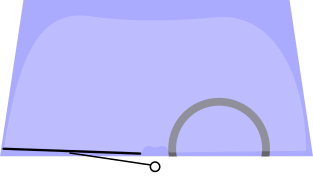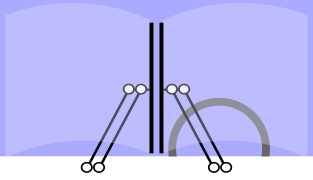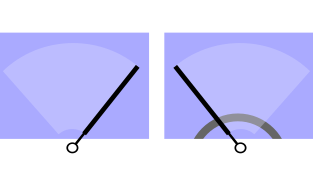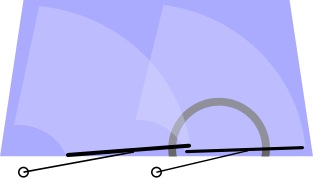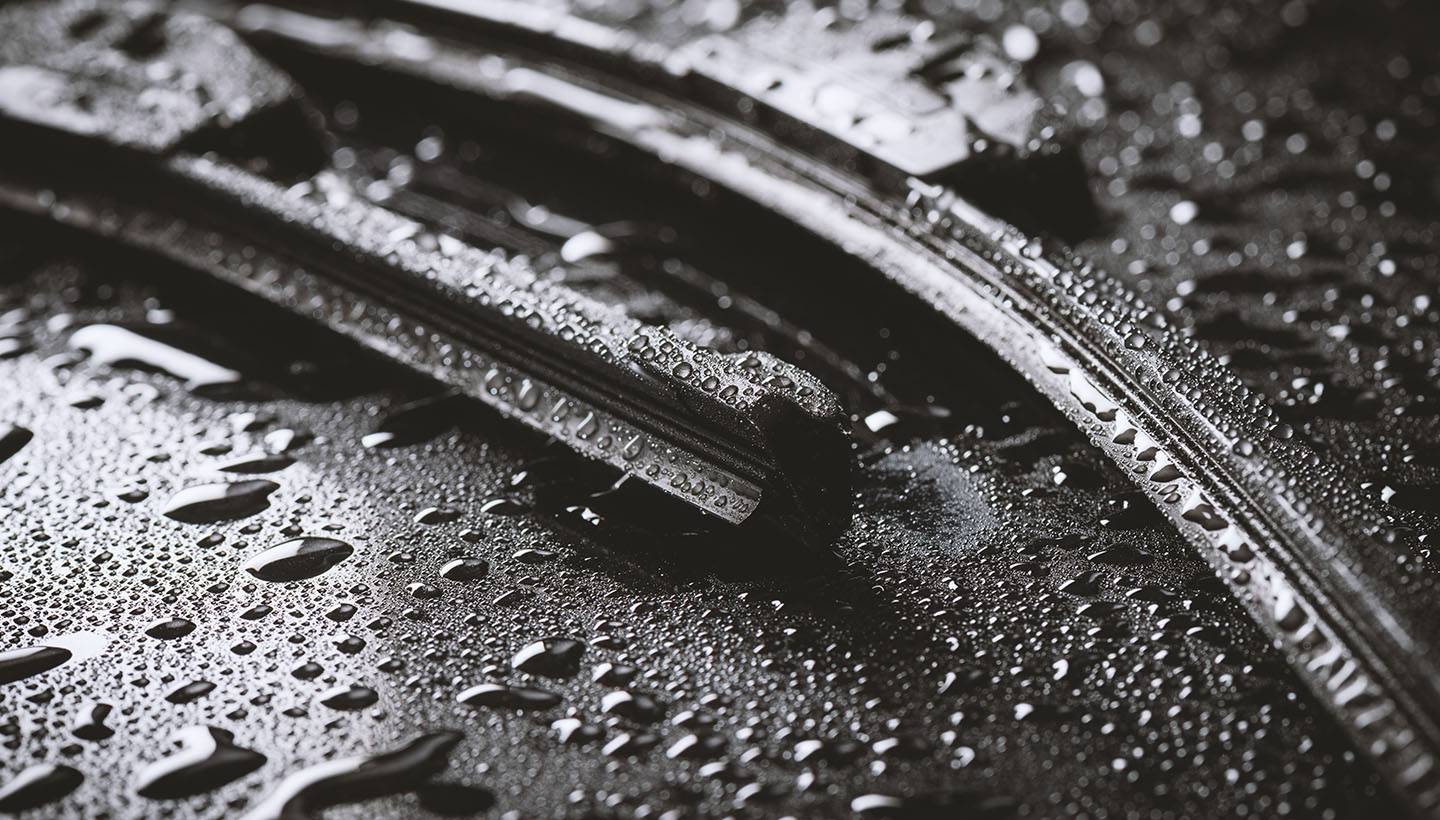
Car glass that is exposed to dirt or rainwater will usually be cleaned using a wiper. Usually, the wiper is attached to the front and rear sides. With the wiper, the driver’s view will not be hindered and so they can see clearly towards the front or rear.
Wipers do have a very important role in the safety of the riders because wiper performance is closely related to the safety of driving. If it rains a lot and the car doesn’t use wipers, the windshield will be dewy. Visible dew on the glass will block the view of the driver.
When the driver’s view is hindered, the risk of an accident is very high. This makes the wipers a very important car enhancement and must be present on all types of vehicles.
Car Wiper Components
Car wipers do consist of various components such as the wiper blade, link, switch, motor, and arm.
Wiper Motor
The wiper motor is one part of the wiper system that is useful for moving the wiper automatically. The commonly used wiper motor utilizes a magnet with a reduction gear. There are at least 2 types of wiper motors that can cause magnetic fields, namely the ferrite magnet type which uses permanent magnet ferrite, and the wound rotor type which uses a coil to produce an electromagnet.
The wiper motor that is often used recently is the ferrite magnet type because this type of wiper has a relatively small size and has lightweight, so it is very suitable to be attached to any type of car.
Wiper Link
The wiper link is often referred to as the wiper lever which is useful for changing the rotation motion of the wiper motor into a movement that goes back and forth from the left and right. The front of the car usually uses a wiper system that uses two blades at once and the mechanism used to move the two blades using a parallel tandem system.
When the wiper starts to turn on, the wiper motor will rotate the crank arm and this will make the connecting rods pull and push each other. The wiper link will make the wiper arm work in a semicircle around the pivot shaft. The linking rod or connecting rod which is usually attached to the two wiper arms will make the two blades work simultaneously and work in parallel.
Wiper Arm
The wiper arm usually consists of a head that is used to tie the wiper arm to the wiper shaft. The springs will be useful for holding the blade. While the arm piece will be useful for the process of installing the blade and retainer to hold it completely.
Wiper Blade
Baca Juga
-
Tips on Using Roof Rack on Your Car
-
Safety is Always First
-
Everything You Need To Know About Car Catalytic Converter
The wiper blade usually consists of a rubber which is useful for cleaning the surface of the car glass. There is a combination of leaf spring packing with levers and clips to attach the blade to the wiper arm.
What Does It Do for Cars?
The wiper serves to clean the windshield of the car at the front and rear, although not all cars have wipers on the rear side. WIper works by removing oil, dust, rainwater, and dirt that get stuck to the windshield.
If there are no wipers, of course, the rainwater that wets the glass will condense and the condition of the glass will become unclear. Not only that, dirt that sticks to the windshield for a long time, of course, is very difficult to remove. If left untreated, of course, will hinder the driver’s view and create a high risk of driving accident.
Not only about the wiper, but there is also a washer that helps the performance of the wiper. The washer will spray or remove cleaning fluid on the windshield so that various dirt on the windshield is easier to remove. Washers can be attached to the front of the car or the rear.
Not all dirt stuck to the car can be removed with a wiper, so the windshield needs to be sprayed with a special cleaning fluid done automatically by the washer. With various significant functions, of course, the washer is needed in a car.
The washer also greatly eases the work of car owners, because they do not need to clean the windshield manually. The washer also greatly helps the performance of the wiper. Wiping the result will also be even cleaner. The washer is usually made of a special liquid that is widely sold in various auto repair shops. Not only cleaning dirt, but the washer can also prevent dirt from coming back on the windshield.
How Wipers Work
When the wiper switch is in the off position, the wiper will not function. When the wiper switch is in low-speed mode, the wiper will work at low speed. Accordingly, when the wiper switch is in high-speed mode, the wiper will work at a fairly high speed.
Now that you hopefully understand how the car wiper works, along with its components and detail functions, you should take care of it as well as possible and be diligent in cleaning it!
Смотреть что такое «wiper» в других словарях:
-
Wiper — may refer to: * Wiper, a term for a hybrid striped bass * Wiper, a term for the moving contact on a potentiometer * Wiper (occupation) * Windscreen wiper * Wiper, another brand name for the Lawnbott * Wiper, a character from the manga and anime… … Wikipedia
-
Wiper — Wip er, n. 1. One who, or that which, wipes. [1913 Webster] 2. Something used for wiping, as a towel or rag. [1913 Webster] 3. (Mach.) A piece generally projecting from a rotating or swinging piece, as an axle or rock shaft, for the purpose of… … The Collaborative International Dictionary of English
-
wiper — [wī′pər] n. 1. a person or thing that wipes 2. something used for wiping, as a towel or rag 3. a moving electrical contact, as in a rheostat 4. a projecting piece on a rotating or rocking part, which raises and lowers or trips another, usually… … English World dictionary
-
wiper — A metal or plastic device with a rubber blade that scrapes across the windshield to clean the windshield from rain or other moisture. Also called delay wiper, hidden wiper, hideaway wiper, intermittent wiper control, linear wiper system, rear… … Dictionary of automotive terms
-
wiper — noun ADJECTIVE ▪ windscreen (BrE), windshield (AmE) ▪ rear VERB + WIPER ▪ put on, switch on, turn on … Collocations dictionary
-
wiper — UK [ˈwaɪpə(r)] / US [ˈwaɪpər] noun [countable] Word forms wiper : singular wiper plural wipers a windscreen wiper … English dictionary
-
Wiper — Recorded in many forms including Wipfl, Wipfler, Wiper, Wipper, Wippermann, Wipert, Wippert, Wippler, Wippold, Wipprecht, Wippel and Wyper, this is a German surname of ancient pre 7th century origins. However spelt the derivation is from the… … Surnames reference
-
wiper — [[t]wa͟ɪpə(r)[/t]] wipers N COUNT: usu pl A wiper is the same as a windscreen wiper … English dictionary
-
wiper — noun (C) a windscreen wiper or windshield wiper … Longman dictionary of contemporary English
-
Wiper — Gelöschte Dateien sind entgegen weitverbreiteter Ansicht nicht wirklich gelöscht. Eraser (engl. Radiergummi), Wiper oder auch Shredder bezeichnet Software, mit deren Hilfe sich Daten unwiederbringlich von einem EDV spezifischen Speichermedium… … Deutsch Wikipedia
-
wiper — /wuy peuhr/, n. 1. a person or thing that wipes. 2. the thing with which something is wiped, as a towel, handkerchief, or squeegee. 3. See windshield wiper. 4. Elect. the portion of a selector or other similar device that makes contact with the… … Universalium
Windshield wipers are operated by an electric motor. The electric motor is attached to a worm gear, which transmits the necessary force to a long rod that sets the wiper arms in motion. The worm gear is able to generate the force required to move the wipers as fast as they need to move.
What is wiper in a car?
A windscreen wiper or windshield wiper (American English) is a device used to remove rain, snow, ice, washer fluid, water, and/or debris from a vehicle’s front window so the vehicle’s operator can better see what’s ahead of them.
Why wiper system is useful in the automotive unit?
Windscreen wiper is essential for keeping the windscreen sufficiently clean for driver’s visibility specifically for modern high speed vehicles. The washer cleans the driver’s side of the windscreen whenever required. Each motor vehicle is equipped with an audible warning device i.e. a horh.
What is wiper control?
Wiper Controls ” ” A typical wiper control stalk. Most wipers have a low and a high speed, as well as an intermittent setting. When the wipers are on low and high speed, the motor runs continuously. But in the intermittent setting, the wipers stop momentarily between each wipe.
How many types of wiper motors are there?
The heart of motor vehicle windshield wipers is a DC motor, which can be rated 6V, 12V, or 24V. Most motors are run off a 12V source, while a few are rated 6V and 24V.
What are the types of windshield wipers?
The three main types of wiper blades are: conventional, flat and hybrid. If your car came with conventional windscreen wipers, they can be replaced with flat or hybrid wipers for a performance and visual upgrade.
Where is the wiper in a car?
On most vehicles, the windshield wipers can be activated by a lever located to the right of the steering wheel. Pulling the lever down should activate the windshield wipers on their lowest setting.
Which is the most commonly used wiper in all auto vehicle?
Pivot/radial Wiper: It is the most commonly used and hence, it is found in most cars.
Where is the wiper control module?
Location. The wipe control module is mounted under the driver’s side dashboard, next to the door buzzer box. It is a black module with two white, five-pin connectors plugged into it, and a ground wire screwed onto the side. It is normally secured with two screws, but it may also simply be taped in place.
What controls wiper speed?
Rain Sensor The microprocessor turns on or adjusts the speed of the wipers according to information it receives from the sensors. You can override the system when needed, such as when you drive through an automatic car wash.
How long do wiper motors last?
The wiper motor on a car is supposed to last a lifetime. Typically, this will not be the case due to the conditions that this part of a car is exposed to. The heat and moisture that a wiper motor is exposed to on a daily basis will eventually lead to you having to get it replaced.
How does the wiper motor work in a car?
The wiper transmission translates the rotation of the wiper motor, converting it into the back and forth motion of the blades. The blades them remove dust, raindrops, snow, ice, and other debris from the windshield. Behind all the mentioned windshield wiper assembly parts is an electric component called wiper motor.
How does a low speed windshield wiper work?
If the wiper switch is moved to the MIST position and held, the windshield wiper motor will operate in the LOW mode until the switch is released. Windshield wiper DELAY operation is a low speed wiper motor function with a variable delay interval between the wiper motor cycles.
Is the windshield wiper motor part of the cover?
The windshield wiper motor module is part of the windshield wiper motor cover and controls wiper motor operation. The accessory voltage supply circuit to the windshield wiper motor assembly is used to operate the wiper motor in all modes.
How is the park operated on a windshield wiper?
Windshield wiper motor park operation is controlled by the wiper motor module using an input from the park switch within the wiper motor assembly.
A windscreen wiper (Commonwealth English) or windshield wiper (American English) is a device used to remove rain, snow, ice, washer fluid, water, or debris from a vehicle’s front window. Almost all motor vehicles, including cars, trucks, buses, train locomotives, and watercraft with a cabin—and some aircraft—are equipped with one or more such wipers, which are usually a legal requirement.
A wiper generally consists of a metal arm; one end pivots, and the other end has a long rubber blade attached to it. The arm is powered by a motor, often an electric motor, although pneumatic power is also used for some vehicles. The blade is swung back and forth over the glass, pushing water, other precipitation, or any other impediments to visibility from its surface. The speed is usually adjustable on vehicles made after 1969, with several continuous rates and often one or more intermittent settings. Most personal automobiles use two synchronized radial-type arms, while many commercial vehicles use one or more pantograph arms.
On some vehicles, a windscreen washer system is also used to improve and expand the function of the wiper(s) to dry or icy conditions. This system sprays water, or an antifreeze window washer fluid, at the windscreen using several well-positioned nozzles. This system helps remove dirt or dust from the windscreen when used in concert with the wiper blades. When antifreeze washer fluid is used, it can help the wipers remove snow or ice. For these types of winter conditions, some vehicles have additional heaters aimed at the windows, embedded heating wire(s) in the glass, or embedded heating wire(s) in the wiper blade; these defroster systems can melt ice or help to keep snow and ice from building up on the windscreen. Less frequently, miniature wipers are installed on headlights to ensure they function optimally.
History[edit]
Early versions[edit]
One of the earliest recorded patents for the windscreen wiper is by George J. Capewell of Hartford Connecticut, which was filed on August 6, 1896.[1] His invention was for «windows of slow-moving craft; but it is more particularly adapted and intended for windows of rapidly-moving vehicles, such as high-speed locomotives and cars, with which it is necessary that the observer or driver should have a clear view of the path or track.» Similar to current automotive wiper designs, his invention involves «usually two of these wipers, and they can be secured to the frame below the front board of the vehicle or behind the housing surrounding the window in position to be out of sight and in such manner that one will scrape off the heaviest part of the substance collected upon the glass.» His patent illustration shows a circular window, although the patent notes «it is not essential that the glass be circular in form.»
Other early designs for the windscreen wiper are credited to Polish concert pianist Józef Hofmann,[2] and to Mills Munitions, Birmingham, who also claimed to have been the first to patent windscreen wipers in England.
At least three inventors patented windscreen cleaning devices at around the same time in 1903; Mary Anderson, Robert Douglass, and John Apjohn. In April 1911, a patent for windscreen wipers was registered by Sloan & Lloyd Barnes, patent agents of Liverpool, England, for Gladstone Adams of Whitley Bay.
American inventor Mary Anderson is popularly credited with devising the first operational windscreen wiper in 1903.[3][4] In Anderson’s patent, she called her invention a «window cleaning device» for electric cars and other vehicles. Operated via a lever from inside a vehicle, her version of windscreen wipers closely resembles the windscreen wiper found on many early car models. Anderson had a model of her design manufactured, then filed a patent (US 743,801) on June 18, 1903 that was issued to her by the US Patent Office on November 10, 1903.[5][6]
Irish born inventor James Henry Apjohn (1845–1914) patented an «Apparatus for Cleaning Carriage, Motor Car and other Windows» which was stated to use either brushes or wipers and could be either motor driven or hand driven. The brushes or wipers were intended to clean either both up and down or in just one direction on a vertical window. Apjohn’s invention had a priority date in the UK of 9 October 1903.[8]
John R. Oishei (1886-1968) formed the Tri-Continental Corporation in 1917. This company introduced the first windscreen wiper, Rain Rubber, for the slotted, two-piece windscreens found on many of the automobiles of the time. Today Trico Products is one of the world’s largest manufacturers of windscreen wipers.[citation needed] Bosch has the world’s biggest windscreen wiper factory in Tienen, Belgium, which produces 350,000 wiper blades every day.[9] The first automatic electric wiper arms were patented in 1917 by Charlotte Bridgwood.[10]
Inventor William M. Folberth and his brother, Fred, applied for a patent for an automatic windscreen wiper apparatus in 1919, which was granted in 1921.[11] It was the first automatic mechanism to be developed by an American, but the original invention is attributed by others to Hawaiian, Ormand Wall.[11] Trico later settled a patent dispute with Folberth and purchased Folberth’s Cleveland company, the Folberth Auto Specialty Co. The new vacuum-powered system quickly became standard equipment on automobiles, and the vacuum principle was in use until about 1960. In the late 1950s, a feature common on modern vehicles first appeared, operating the wipers automatically for two or three passes when the windscreen washer button was pressed, making it unnecessary to manually turn the wipers on as well. Today, an electronic timer is used, but originally a small vacuum cylinder mechanically linked to a switch provided the delay as the vacuum leaked off.
Intermittent wipers[edit]
The inventor of intermittent wipers (non-continuous, now including variable-rate wipers) might have been Raymond Anderson, who, in 1923, proposed an electro-mechanical design. (US Patent 1,588,399). In 1958, Oishei et al. filed a patent application describing not only electro-mechanical, but also thermal and hydraulic designs. (US Patent 2,987,747). Then, in 1961, John Amos, an engineer for the UK automotive engineering company Lucas Industries, filed the first patent application in the UK for a solid-state electronic design. (US patent 3,262,042).
In 1963, another form of intermittent wiper was invented by Robert Kearns, an engineering professor at Wayne State University in Detroit, Michigan.[3] (United States Patent 3,351,836 – 1964 filing date). Kearns’s design was intended to mimic the function of the human eye, which blinks only once every few seconds. In 1963, Kearns built his first intermittent wiper system using off-the-shelf electronic components. The interval between wipes was determined by the rate of current flow into a capacitor; when the charge in the capacitor reached a certain voltage, the capacitor would be discharged, activating one cycle of the wiper motor, and then repeating the process. Kearns showed his wiper design to the Ford Motor Company and proposed that they manufacture the design. Ford executives rejected Kearns’ proposal at the time, but later offered a similar design as an option on the company’s Mercury line, beginning with the 1969 models.[3] Kearns sued Ford in a multi-year patent dispute that Kearns eventually won in court,[12] inspiring the 2008 feature film Flash of Genius based on a 1993 New Yorker article that covered the legal battle.
In March 1970, French automotive manufacturer Citroën introduced more advanced rain-sensitive intermittent windscreen wipers on its SM model. When the intermittent function was selected, the wiper would make one sweep. If the windscreen was relatively dry, the wiper motor drew high current, which would set the control circuit timer to a long delay for the next wipe. If the motor drew little current, it indicated that the glass was still wet, and would set the timer to minimize the delay.
Power[edit]
Wipers may be powered by a variety of means, although most in use today are powered by an electric motor through a series of mechanical components, typically two 4-bar linkages in series or parallel.
Vehicles with air-operated brakes sometimes use pneumatic wipers, powered by tapping a small amount of pressurized air from the brake system to a small air operated motor mounted on or just above the windscreen. These wipers are activated by opening a valve which allows pressurized air to enter the motor.
Early wipers were often driven by a vacuum motor powered by manifold vacuum. This had the drawback that manifold vacuum varies depending on throttle position, and is almost non-existent under wide-open throttle, when the wipers would slow down or even stop. That problem was overcome somewhat by using a combined fuel/vacuum booster pump.
Some cars, mostly from the 1960s and 1970s, had variable-speed, hydraulically-driven wipers, most notably the ’61–’69 Lincoln Continental,[13] ’69–’71 Lincoln Continental Mark III (but not all ’70 models),[14] and ’63–’71 Ford Thunderbird.[15] These were powered by the same hydraulic pump also used for the power steering mechanism.
On the earlier Citroën 2CV, the windscreen wipers were powered by a purely mechanical system, a cable connected to the transmission; to reduce cost, this cable also powered the speedometer. The wipers’ speed was therefore variable with car speed. When the car was stationary, the wipers were not powered, but a handle under the speedometer allowed the driver to power them by hand.[citation needed]
Shape[edit]
Most early wipers used a rubber blade attached to a flat metal base. But as aerodynamic and styling concerns introduced curved windshields, these proved insufficient. In 1945, John W. Anderson, founder of Trico rival Anco, filed a patent for a wiper with branched arms to keep the blade pressed uniformly against both curved and flat glass,[16] adaptable to almost any windscreen curvature.[17] As curved windshields became more popular and widespread, following the debut of the 1947 Studebaker Starlight Coupe,[18] these soon became standard equipment. While they have been superseded by «beam-type» wipers with bodies made of flexible material, this type still remains the most popular.
Wiper blades are made of natural rubber, EPDM rubber (or ethylene propylene rubber)[19] or a combination of both, as natural rubber performs better in cold weather but EPDM rubber doesn’t «set» and resists better to thermal aging, UV, ozone and tearing.[20] Some manufacturers coat them with graphite.[20]
Geometry[edit]
Most wipers are of the pivot (or radial) type: they are attached to a single arm, which in turn is attached to the motor. These are commonly found on many cars, trucks, trains, boats, airplanes, etc.
Modern windscreen wipers usually move in parallel (Fig. 1, below). However, various Mercedes-Benz models and other cars such as the Volkswagen Sharan employ wipers configured to move in opposite directions (Fig. 2), which is mechanically more complex but can avoid leaving a large unwiped corner of the windscreen in front of the front-seat passenger. A cost benefit to the auto-maker occurs when wipers configured to move in opposite directions do not need to be repositioned for cars exported to right hand drive countries such as the UK and Japan.
Another wiper design (Fig. 6) is pantograph-based, used on many commercial vehicles, especially buses with large windscreens. Pantograph wipers feature two arms for each blade, with the blade assembly itself supported on a horizontal bar connecting the two arms. One of the arms is attached to the motor, while the other is on an idle pivot.[citation needed] The pantograph mechanism, while being more complex, allows the blade to cover more of the windscreen on each wipe. However, it also usually requires the wiper to be «parked» in the middle of the windscreen, where it may partially obstruct the driver’s view when not in use. A few models of automobile sometimes employ a pantograph arm on the driver’s side and a normal arm for the passenger. The Triumph Stag, Lexus and several US makes employ this method to cover more glass area where the windscreen is quite wide but also very shallow. The reduced height of the windscreen would need the use of short wiper arms which would not have the reach to the edge of the windscreen.
A simple single-blade setup with a center pivot (Fig. 4) is commonly used on rear windscreens, as well as on the front of some cars. Mercedes-Benz pioneered a system (Fig. 5) called the «Monoblade», based on cantilevers, in which a single arm extends outward to reach the top corners of the windscreen, and pulls in at the ends and middle of the stroke, sweeping out a somewhat «M»-shaped path. This way, a single blade is able to cover more of the windscreen, displacing any residual streaks away from the centre of the windscreen.
Some larger cars in the late ’70s and early ’80s, especially LH driver American cars[citation needed], had a pantograph wiper on the driver’s side, with a conventional pivot on the passenger side. Asymmetric wiper arrangements are usually configured to clear more windscreen area on the driver’s side, and so are mostly mirrored for left and right-hand-drive vehicles (for example, Fig. 1 vs. Fig 10). One exception is found on the second generations of the Renault Clio, Twingo and Scénic as well as BMW’s E60 5 Series and E63 6 Series, the Peugeot 206 and the Nissan Almera Tino, where the wipers always sweep towards the left. On right-hand-drive models, a linkage allows the right-hand wiper to move outwards towards the corner of the windscreen and clear more area.
-
Fig. 1: Most common geometry, found on vast majority of vehicles, mainly LHD cars; RHD Mercedes-Benz W140 and some earlier British cars
-
Fig. 2: Widely used alternative configuration suiting either LHD or RHD operation[a]
-
-
-
Fig. 5: Complex- or eccentric-arc system, used on the Subaru XT as well as the Mercedes-Benz W124, R129, W201, W202, C208 and W210; eccentric design used for passenger wiper on most late-model Mercedes-Benzes
-
Fig. 6: Pantograph system, used on some buses (e.g. Mercedes-Benz O305), some school buses, some trolleybuses (e.g. Ikarus 415T and ZiU-9), some trains (e.g. IE 29000 Class) and the Kenworth T600 as well as the rear wiper for the Honda CR-X Si and the Porsche 928 and for the driver’s side of the Triumph TR7
-
Fig. 7: MAN, MAZ, ROMAN, DAF XF, Hino 700, Mitsubishi Fuso Super Great, UD Quon, UD Quester, Škoda 14Tr, Toyota FJ Cruiser, Jaguar E-Type, MGB, MG Midget, Austin Healey Sprite, GMC Hummer EV (a 1968 US-only ruling required a certain percentage of the windscreen to be wiped).
-
Fig. 8: Obsolete design, found on some older fire trucks, utility vehicles and military vehicles, (e.g. ZIL-131, some school buses; same design on single windscreen for Jeep Wrangler YJ
-
Fig. 9: US military wheeled vehicles, jeepneys, some school buses and utility vehicles, Hummer H1 and HUMVEE
-
Fig. 10: Like Fig. 1 but mirror-reversed, mainly seen on RHD cars, LHD Mercedes-Benz W140
Other wiper geometries[edit]
- Works similar to Fig. 8 but not a split screen windscreen and rest state is at the bottom of the windscreen facing outwards.
- Alpine A310 and Renault Alpine GTA
- Panhard Dyna Z, Panhard PL 17 and Panhard 24
- Works similar to Fig. 2 but one wiper has its resting position up and the other down.
- Simca Aronde
- Works similar to Fig. 9, but uses a single wiper.
- AEC Routemaster
- Works similar to Fig. 6, but uses only one wiper.
- V2A/V2B/V3A/V3B
Unusual wiper geometries[edit]
- Works as would Fig. 1, but uses a large, single pantograph wiper.
- Audi A2
- Honda Today
- Renault Twingo I
- Renault Kwid/City K-ZE
- Dacia Spring
- Citroën C1
- Peugeot 107
- Peugeot 108
- Toyota Aygo
- Lamborghini Murciélago
- Lexus LFA
- McLaren MP4-12C
- Mercedes W140
- Mitsubishi i
- Datsun Go
- Toyota Etios/Yaris/Vitz (XP130)
- Works as would Fig. 6, but the wipers are arranged upside down.
- Renault PR100 and its articulated version Renault PR180.2
- British Rail Class 92
- Works as would Fig. 1 or Fig. 10, but the wipers are arranged upside down.
- New Routemaster
- Alexander Dennis Enviro400, Alexander Dennis Enviro500
Other automotive applications[edit]
Rear wipers[edit]
Some vehicles are fitted with wipers (with or without washers) on the back window as well. Rear-window wipers are typically found on hatchbacks, station wagons / estates, sport utility vehicles, minivans, and other vehicles with more vertically-oriented rear windows that tend to accumulate dust. First offered in the 1940s, they achieved widespread popularity in the 1970s after their introduction on the Porsche 911 in 1966 and the Volvo 145 in 1969.[21]
Headlight wipers[edit]
In the 1960s, as interest in auto safety grew, engineers began researching various headlamp cleaning systems. In late 1968, Chevrolet introduced high pressure fluid headlamp washers on a variety of their 1969 models. In 1970, Saab Automobile introduced headlight wipers across their product range. These operated on a horizontal reciprocating mechanism, with a single motor. They were later superseded by a radial spindle action wiper mechanism, with individual motors on each headlamp. In 1972, headlamp cleaning systems became mandatory in Sweden.
Headlamp wipers have all but disappeared today with most modern designs relying solely on pressurized fluid spray to clean the headlights. This reduces manufacturing cost, minimizes aerodynamic drag, and complies with EU regulations limiting headlamp wiper use to glass-lensed units only (the majority of lenses today are made of plastic.)
Other features[edit]
Windscreen washer[edit]
Most windscreen wipers operate together with a windscreen washer; a pump that supplies a mixture of water, alcohol, and detergent (a blend called windscreen washer fluid) from a tank to the windscreen. The fluid is dispensed through small nozzles mounted on the hood. Conventional nozzles are usually used, but some designs use a fluidic oscillator to disperse the fluid more effectively.
In warmer climates, water may also work, but it can freeze in colder climates, damaging the pump. Although automobile antifreeze is chemically similar to windscreen wiper fluid, it should not be used because it can damage paint. The earliest documented idea for having a windscreen wiper unit hooked up to a windscreen washer fluid reservoir was in 1931, Richland Auto Parts Co, Mansfield, Ohio.[22][23] Uruguayan racecar driver and mechanic Héctor Suppici Sedes developed a windscreen washer in the late 1930s.[24]
Since 2012, nozzles are replaced on some cars (Tesla, Volvo XC60 2018-2021, Citroen C4 Cactus) by a system called AquaBlade, developed by the company Valeo. This system supplies the washing liquid directly from the spoiler element of the wiper blade. This system suppresses visual disturbances during driving and so reduces the reaction time of the driver in case of incident.[25]
Hidden wipers[edit]
Some larger cars are equipped with hidden wipers (or depressed-park wipers). When wipers are switched off in standard non-hidden designs, a «parking» mechanism or circuit moves the wipers to the lower extreme of the wiped area near the bottom of the windscreen, but still in sight. For designs that hide the wipers, the windscreen extends below the rear edge of the bonnet. The wipers park themselves below the wiping range at the bottom of the windscreen, but out of sight. Late model vehicles that hide wiper blades under the windscreen need to be placed in a service position in order to lift the wiper blade from the windscreen using the wiper service position.
Rain-sensing wipers[edit]
Some vehicles are now available with automatic or driver-programmable windscreen wipers that detect the presence and amount of rain using a rain sensor. The sensor automatically adjusts the speed and frequency of the blades according to the amount of rain detected. These controls usually have a manual override.
Rain-sensing windscreen wipers appeared on various models in the late 20th century, one of the first being the Citroën SM. As of early 2006, rain-sensing wipers are optional or standard on all Cadillacs and most Volkswagens, and are available on many other mainstream manufacturers.
The rain-sensing wipers system currently employed by most car manufacturers today was originally invented and patented in 1978 by Australian, Raymond J. Noack, see U.S. Patents 4,355,271 and 5,796,106. The original system automatically operated the wipers, lights and windscreen washers.
Bladeless alternatives[edit]
A common alternative design used on ships, called a clear view screen, avoids the use of rubber wiper blades. A round portion of the windscreen has two layers, the outer one of which is spun at high speed to shed water.
High speed aircraft may use bleed air which uses compressed air from the turbine engine to remove water, rather than mechanical wipers, to save weight and drag.[citation needed] Effectiveness of this method also depends on water-repellent glass treatments similar to Rain-X.
Legislation[edit]
Many jurisdictions have legal requirements that vehicles be equipped with windscreen wipers. Windscreen wipers may be a required safety item in auto safety inspections. Some US states have a «wipers on, lights on» rule for cars.[26][27]
In popular culture[edit]
In the 1999 television commercial Synchronicity for the Volkswagen Jetta automobile,[28] windscreen wipers were synchronized with events seen through the car windows, and with the song «Jung at Heart», which was commissioned for the advertising agency Arnold Worldwide and composed by Peter du Charme[29] under the name «Master Cylinder».[30]
See also[edit]
- Automobile ancillary power
- List of auto parts
- Squeegee
Notes[edit]
- ^ Buick Verano, Mercedes-Benz W114, W168, W169, W245, W414 and W639, Smart Fortwo (1998-2015), Volkswagen Golf Plus, Volkswagen Sharan I/SEAT Alhambra I, Volkswagen Touran (some models until 2011), Datsun 510 (1968 only), Mitsubishi Delica, Mitsubishi Grandis, Honda Civic (2005–2011), Oldsmobile Cutlass Supreme (5th Generation), some minivans, some buses, Peugeot 307, Peugeot 308 (2007-2013), Peugeot 407, Peugeot 508, Peugeot 3008, Peugeot 5008, Peugeot RCZ, Ford Focus (third generation), Ford Mondeo (fourth generation), Ford B-Max, Ford C-Max (second generation), Ford S-Max, Ford Galaxy, Ford Kuga (second generation), Ford Transit Connect (second generation), Ford Transit Custom, Citroën C4, Citroën Xsara Picasso, Citroën C4 Picasso, Citroën C5 II, Citroën C6, Citroën C8/Fiat Ulysse II/Lancia Phedra/Peugeot 807, DS 4, DS 5, BMW i3, BMW i8, Opel Meriva, Opel Zafira, Opel Astra J, Opel Cascada, Chevrolet Volt/Opel Ampera, Renault Scénic III, Renault Espace (2002–present), Renault Vel Satis, Plymouth Voyager/Dodge Caravan/Chrysler Voyager/Chrysler Town & Country, Mazda MPV, some first generation Toyota Previas, third generation Kia Carens
References[edit]
- ^ «WINDOW CLEAN». google.com. Retrieved 7 March 2019.
- ^ Day T (2000). A Century of Recorded Music: Listening to Musical History. Yale University Press. p. 11. ISBN 978-0-300-09401-5.
- ^ a b c «The Windshield Wiper». American Heritage. Archived from the original on 2007-09-11. Retrieved 2010-12-23.
- ^ «Windshield Wipers». Massachusetts Institute of Technology.
- ^ «Mary Anderson». Encyclopedia of Alabama. Archived from the original on 2014-03-13. Retrieved 2010-12-20.
- ^ «Window-Cleaning Device». United States Patent and Trademark Office.
- ^ «Locomotive-cab-window cleaner». google.com. Retrieved 5 April 2018.
- ^ Espacenet – Bibliographic data
- ^ Robert Bosch GmbH (2009-01-16). «BoschLive». Bosch.com.au. Archived from the original on 2011-09-11. Retrieved 2011-09-23.
- ^ «The Evolution of Wind Shield Wipers — A Patent History — IPWatchdog.com | Patents & Patent Law». IPWatchdog.com | Patents & Patent Law. 2014-11-09. Retrieved 2018-10-09.
- ^ a b «Automatic Windshield Wipers — Ohio History Central». www.ohiohistorycentral.org. Retrieved 2018-01-13.
- ^ Schudel, Matt (26 February 2005). «Accomplished, Frustrated Inventor Dies». Washington Post. Retrieved 12 December 2011.
- ^ «The Cars of James Bond: Lincoln Continental». wordpress.com. 25 June 2014. Retrieved 5 April 2018.
- ^ «Automotive Mileposts, 1969-1971 Lincoln Continental Mark III». Retrieved 1 June 2020.
- ^ «Automotive Mileposts, 1955-1979 Ford Thunderbird». Retrieved 1 June 2020.
- ^ «Windshield Wipers 101». Top Gear Philippines.
- ^ «Windshield wiper blade linkage assembly».
- ^ «Tech 101: What you need to know about windshield wipers». hemmings.com.
- ^ 20150047142, Gotzen, Nicolaas, «Epdm Wiper Rubber», issued 2015-02-19
- ^ a b «The science and ingenuity behind the humble wiper blade». www.imeche.org. Retrieved 2022-01-21.
- ^ «The Rear Wiper: A Vital Strand of Porsche DNA». wordpress.com. 30 April 2015. Retrieved 5 April 2018.
- ^ Windshield Freed Of Snow With Alcohol Wiper», February 1931, Popular Mechanics article bottom half of page
- ^ «car detailing services».
- ^ Supicci Sedes, un espíritu creador — La Voz del Interior, 1 January 2001
- ^ ATZ, Automobiltechnische Zeitschrift, June 2015
- ^ «AAA Digest of Motor Laws: Headlight Use: United States Canada». drivinglaws.aaa.com. American Automobile Association. Retrieved 4 September 2017.
- ^ Tuoti, Gerry (7 April 2015). «New state law: Wipers on, lights on». Cape Cod Times. Hyannis, Massachusetts. Archived from the original on 5 September 2017. Retrieved 4 September 2017.
- ^ Warner, Judy (January 11, 1999). «VW Unveils ‘Da Da Da’-Like Jetta Spot». Adweek. Retrieved January 30, 2020.
- ^ Kattleman, Terry (February 1, 2003). «Sound & Vision: Music: The Latest Drive-Time Hit from VW Follows in a Winning Indie Tradition». Ad Age. Retrieved January 30, 2020.
- ^ du Charme, Peter. «Jung at Heart by Peter du Charme». Bandcamp. Retrieved January 30, 2020.
External links[edit]
- How Windshield Wipers Work at HowStuffWorks
Car windscreen wipers rely on a component called wiper motor to work. Hidden under the hood, the motor provides the torque to move the wipers. Its action ensures your car windscreen is free from mud, dust, and rainwater when on the road. But what is a wiper motor and how does it work? This guide has the answers and a lot more, starting with the definition.
All there is to know about Automotive Wiper motors
Wiper Motor Definition
The car wiper motor is the electrical device that rotates to operate windscreen wipers. It’s usually a simple DC motor with brushes (or without), and copper wire armature. The motor is also called windshield wiper motor or windscreen wiper motor.
Wiper motors form part of the windscreen washer system that comprises a wiper switch, wiper linkage, wiper arms, and the wash fluid reservoir. It’s usually located in the engine bay where it mounts on the firewall using bolts.
Most vehicles use a single motor for the front windshield. Others come with a rear wiper motor as well, with high-end cars featuring rear window wipers. Every extra windshield or window to be wiped means an additional motor. A vehicle may, therefore, have the component in other places than the front windscreen.
Wiper motor design varies. One version of the motor uses permanent magnets, the other electromagnets. You can easily recognize a permanent magnet type of motor by its shape. It’s normally a cylindrical shape compared to the square shape of those that use electromagnets.
There’s also the one speed and variable speed wiper motor. These mostly differ in the number of brushes. The single-speed motor uses two brushes, the two-speed type three. Now, on to the wiper motor working principle and, why you need it functional in your car.
Wiper Motor Function and Operation
The wiper motor is the engine behind the operation of windscreen wipers. It provides the torque to move them, ensuring a clean windshield. The motor is located in a convenient place that allows it to work the wiper mechanism.
The wiper motor location aside, its design also helps to increase effectiveness. The setup consists of transmission gears. The arrangement of the gears multiplies the rotational force of the motor in what’s called gear reduction. The operation happens as follows.
- When you switch on the windscreen wipers, the switch sends the signal to the electronic control model located on the wiper motor transmission assembly
- The control model operates several circuits, including the relay that sends voltage to the motor itself
- The motor contains a wire winding which, on being energized, produces a reaction force that causes the armature to start spinning
- The spinning armature rotates a shaft. The shaft contains a worm or spiral gear
- The spinning worm rotates a toothed plastic wheel which, in turn, operates pinion gear. The gear rotation works a short arm or pushrod into to and fro motion
- The arm is connected to the wiper linkage. Its back a and forth movement operates the linkage arms which then move the wiper blades against the windscreen surface
Some wipers activate automatically when it starts to rain. The action is controlled by the motor’s electronic module and requires the input of rain sensors. The sensors are installed on the windscreen.
Wiper motors also operate on a “safe park” circuit. The circuit allows the wiper blades to reach their rest position even when you switch off the wiper system when they are midway on the windscreen.

Parts of Wiper Motor and Transmission Assembly
To move the wipers, the motor uses a transmission mechanism consisting of a set of gears and electronics. The setup is the mechanism behind the back and forth motion of the wiper blades. To help you understand the assembly in more detail, here are the main parts that make it.
DC motor
The wiper motor, as we have seen, is usually the traditional direct current motor. It consists of a steel housing enclosing several components. Main wiper motor parts include permanent magnet, armature, brushes, and shaft. These components work together to produce rotation.
The magnet provides the magnetic field that causes the motor to spin. It can be permanent or electromagnetic. The armature is the rotating piece and comprises copper wire winding around a magnetic core.
The brushes are conductors that act as pathways for electric current to flow into the armature coil. A wiper motor usually has three brushes. The third brush allows for two different speeds, high and low depending on the circuitry.
The wiper motor shaft is the central rod that runs through the motor and on a bearing at each end. It holds the armature, allowing it to spin freely when the motor is in operation. The shaft contains a worm on the side of the transmission. As it rotates, the worm gear spins a larger wheel connected to it.
Transmission Assembly
Connected to the wiper motor is the drive mechanism. The mechanism uses the motor rotation to work the wiper system. It consists of a housing toothed plastic gear, wheel containing a conductive ring. There are also often pinion gears to increase the efficiency of the setup.
The toothed gear or wheel meshes the worm gear on the motor shaft. As the shaft spins, the gear also rotates. The gear is joined with another plastic wheel that rotates along with it. On the wheel surface is a conductive ring that helps to ensure the wipers stop at their resting place when you switch off the wiper motor power.
The worm on the motor shaft works together with the larger to provide gear reduction. This enables the motor to produce a large torque capable of operating the heavy linkage and wiper arms. The arrangement also reduces the speed of rotation to a level that suits the action of the wipers.
Electronic Control Module
This the electronic part of the assembly. It contains the electronic circuits and components to operate the setup. The module ensures the right inputs are fed to particular parts such as the motor and “wiper parking” circuits.
The wiper motor controller is a board that mounts to the inside surface of the housing. It receives the electrical connectors to the assembly. These include power connections and those that bring various signals.
A functional module means a functional wiper motor mechanism. If damaged, you may experience problems with the entire system. Movements may turn sluggish or you may have the system develop issues now and then, as explained next.

Common Wiper Motor Problems
The wiper motor is both mechanical and electrical. It contains moving parts that wear with time and electronic components that may fail unexpectedly. The motor is also exposed to the heat in the engine bay and atmospheric moisture and dust.
Problems with the motor affect the entire system, including the transmission and linkage. Issues may show as a slow motor rotation, intermittent stops, or total failure. Here is a summary of common problems, their cause, and how they affect the motor and related parts.
Bad or loose wiper motor connector
Bad connections reduce the amount of current reaching the motor or cut it off completely. Loose connections also cause intermittent and unpredictable problems with the motor such as stopping unexpectedly while the wipers are wiping the windshield.
Blown wiper motor fuse or relay
A bad wiper motor relay or fuse leads to power problems that result in the motor not rotating. A test would help confirm if the specific part is damaged. A fuse or relay can be replaced, even by the car owner.
Worn wiper motor brushes
The motor brushes wear down with time. You cannot prevent that. However, they are replaceable parts that also do not cost a lot. It’s recommended that you change the brushes when they are broken.
Worn or broken wiper motor gear
The gears that are part of the wiper motor and transmission can get worn or damaged. Because the gears transfer the motor rotation to the wiper linkages and arms, their failure means the entire system not working. The gears are replaceable.
Bad wiper motor module
The module is also called the wiper motor controller and contains the circuit that controls its operation. If damaged, the motor may start to work abnormally, leading to a failed wiper system. Electrical tests can help reveal if the module is not working.
Clogged wiper motor parts
A buildup of debris inside the wiper motor or transmission system also causes problems. Clogged parts rotate slowly or do not rotate at all. Clogging also puts a strain on the motor, which may even burn out. Debris affects electrical connections, too, leading to some parts of the wiper motor not working.
Wiper motor troubleshooting requires the help of a mechanic, although DIYers can do it with the right tools and equipment. Diagnosis includes performing tests on the motor itself and supporting components such as fuses and relays. These are mostly electrical tests.
Besides the wiper motor test or tests, a physical examination helps to assess damage and identify the source of problem and fix it. It’s easy to notice clogged gear systems and buildup inside the motor housing. Broken or worn components such as gears and brushes, too.

Wiper Motor FAQs
Q1. What is the RPM of a wiper motor?
A. The wiper motor rpm is usually for 45 rpm for normal speed and around 65 rpm when on the fast speed settings. It also comes in 6V, 12V, and 24V configurations. The typical wiper motor uses a current of between 2 and 4 amperes. Most wiper systems allow for two-speed settings for the wipers. In such setups, the motor uses three brushes instead of two.
Q2. What does a wiper motor pulse board module do?
A. The module is the board that contains the electronic control circuits of the wiper system. It determines various actions, including speed settings, wiper parking, and turning the wiping mechanism and off. In short, it determines the operation of the wiper motor and linkage. The module can get damaged, despite it being protected from the harsh conditions of the engine bay. Luckily, it’s a replaceable part.
Q3. Why does a wiper motor need a relay?
A. The relay switches on a much larger current for the motor using a smaller current. Some motors use a relay while others do not. Usually, the wiper motor current rating determines if a relay is needed or not. Higher rated motors require one, while low power types do not. If you have a rear windshield wiper, its motor is likely to be using a relay.
Q4. How long should a windshield wiper motor last?
A. Wiper motors are meant to last a long time, as long as the lifetime of your car. However, that does not always happen. The component tends to break down earlier depending in usage and operating conditions.
If you have to use the windscreen wipers every day, the motor is likely to be worn after only a few years. Electrical faults can also shorten the lifespan if a wiper motor causing it to burn out. Poor maintenance of the wiper linkage, too, which causes a strain on the motor. To increase the wiper motor lifespan, here are useful tips
- Ensure regular maintenance such as applying lubrication to the moving parts of the linkage and replacing worn components
- Always unstick the wiper blades that have not been used for some time manually
- Avoid using frozen wiper blades to prevent instances where you stress the motor
- Always ensure the wipers are in their correct parking position when not in use. They will not stress the motor when starting
- Make a habit of switching off the wipers before the engine so they return to park correctly
Q5. What are the signs of bad car wiper motor?
A. Wiper motors contain both mechanical and electrical parts. These cause different symptoms when damaged or worn. With a keen eye, you can easily pick out the signs. Here is how to tell if a windshield wiper motor is bad.
- The wipers are not moving when you switch them on
- wipers not stopping when you want them to
- The wipers are moving slower than usual
- You cannot change wiper settings such as moving to a higher speed
- Grinding or clunking wiper motor noise
- Wipers not “parking” or returning to the furthest bottom of the windshield when you switch them off
Most of the signs are caused by a worn motor that need replacing or damaged individual components that can be changed. Clogging is also another reason why you’re seeing the bad wiper motor symptoms.
Q6. Are wiper motor repairs possible?
A. They are, depending on the nature of damage. Worn brushes can be replaced or the armature rewound. Other replaceable parts include the gears in the motors transmission setup. Cleaning a clogged wiper motor or its transmission assembly restores its function without even replacing it. Many people do not repair wiper motors. Instead, they replace the entire system.
Q7. What is the range of car wiper motor price?
A. Wiper motor cost varies from one manufacturer to another and ranges from $60 to $300. The amount can be less or higher depending on the type of motor or model and the vehicle it’s meant for. Different wiper motor suppliers will also have different price tags for the same product. When looking to buy your replacement motor, we would advise you to compare the prices of different suppliers.
Q8. What’s the average wiper motor replacement cost?
A. You can expect to pay between $$50 and $100 for the wiper motor replacement job. That is excluding the cost to purchase the component, varies from $50 to $300 for most models. Should you choose to do it yourself, ensure you have the instructions for the procedure. Wiper motor replacement instructions usually come included in the product package.
Q9. Can I replace a wiper motor myself?
A. The wiper motor location makes the task somewhat difficult. There are several components to remove and, and you need to have an idea about the procedure. You also need the right tools. If you have both the knowledge and installing equipment, a DIY job can save you about $100. Having said that, it’s always advisable to have a mechanic do the work.
Q10. How do I buy a windscreen wiper motor?
A. Wiper motors are built for specific makes of cars. You, therefore need to have information about your type of vehicle when shopping for the component. Your car manual will also have details of the wiper motor specifications to look for.
Other than the wiper motor specs, there’s the choice between an OEM motor or aftermarket model. Both types will fit your vehicle. However, aftermarket options offer flexibility in terms of features and price. You can find one with higher capabilities but selling at a much lower price that an OEM type.
Wiper motors come as single component or kit. A wiper motor kit contains other parts of the wiper system such as arms, blades, and mounting hardware. When shopping for the component, it’s necessary to decide the kind of product you want.
Conclusion
The windshield wiper motor ensures you have clear vision when driving. It provides the mechanical energy to move the entire system that comprises arms and blades. Wiper motors, although designed to last a lifetime, can break down and fail. When that happens, you want to be able to find a replacement. You also want to know when you have a failed wiper motor so you can take action early enough. The information contained in this article is meant to help you with all that and more.

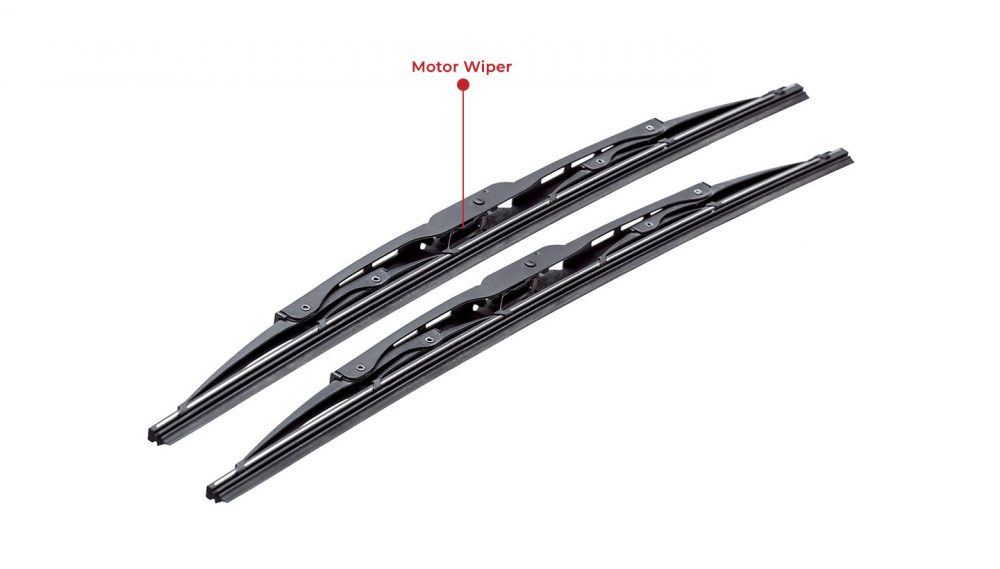
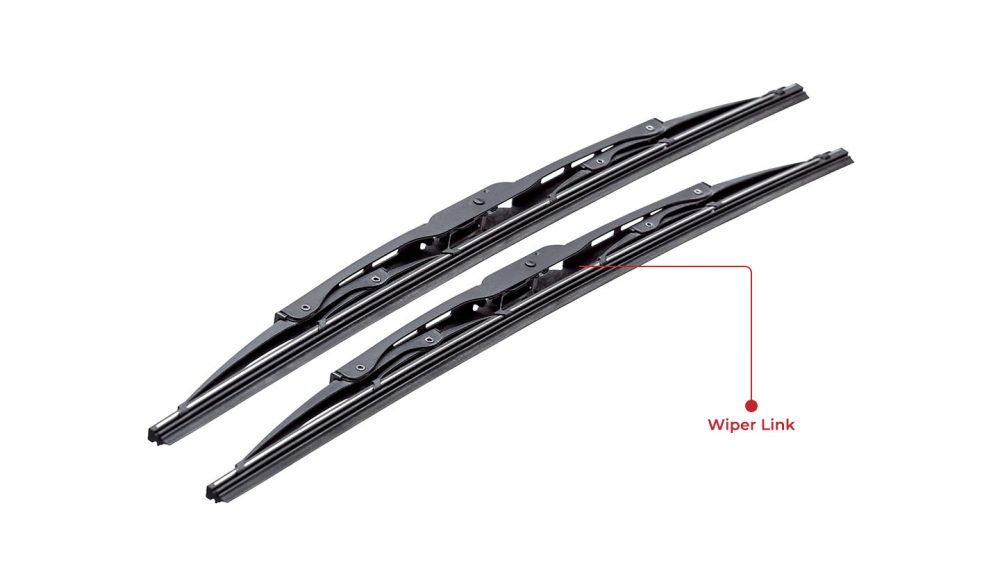
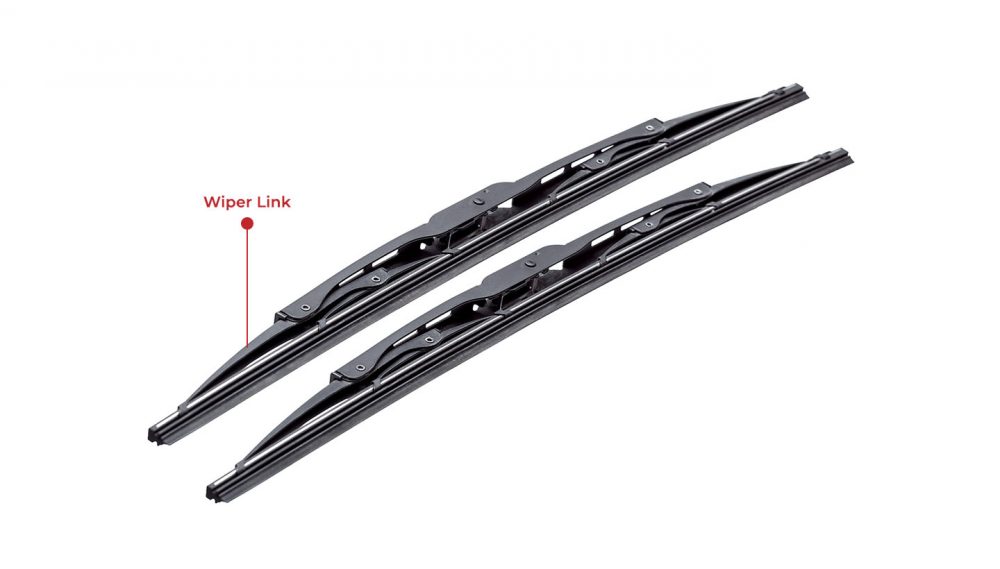
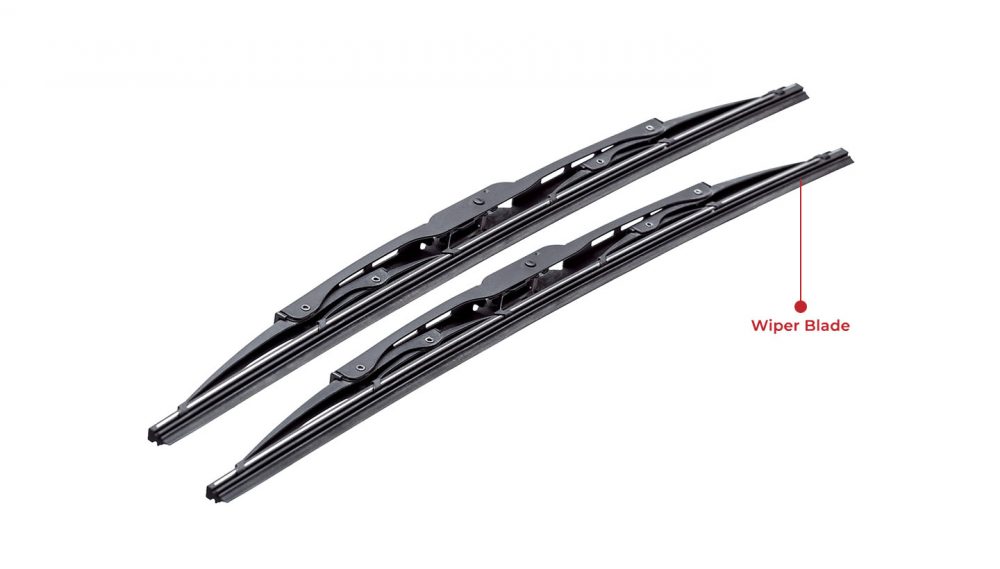
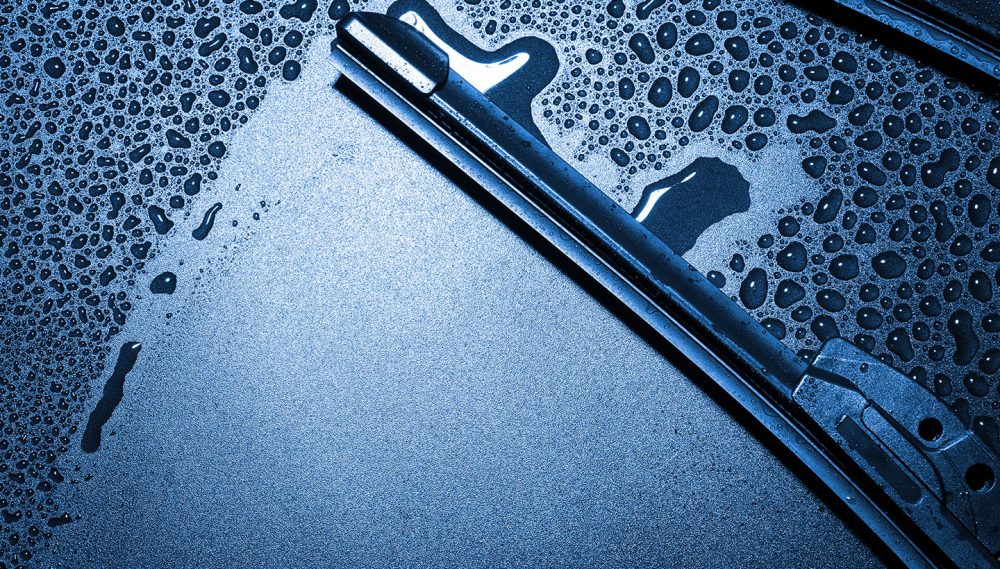
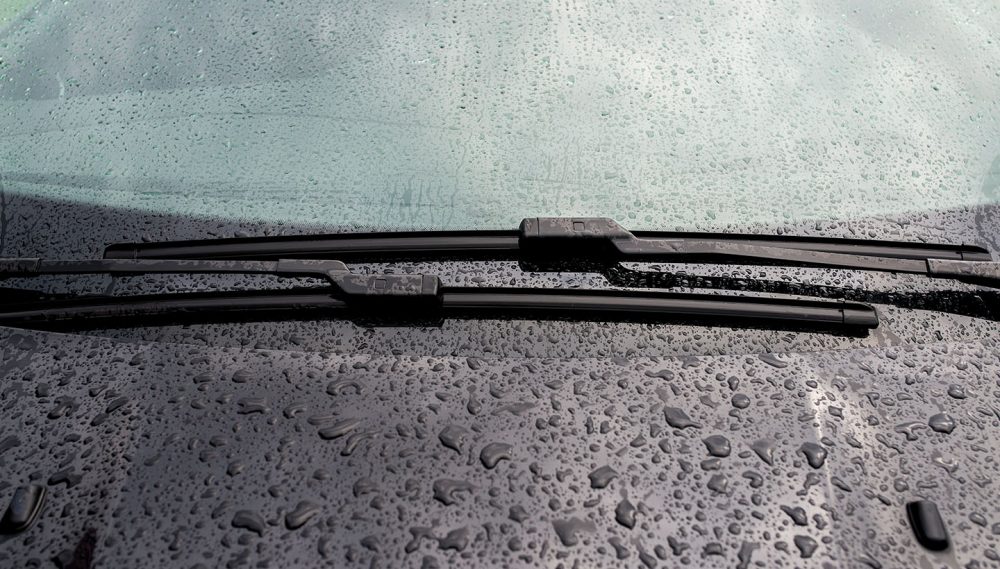

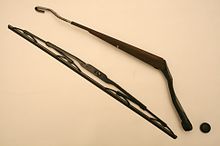



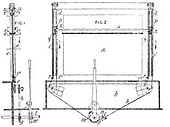



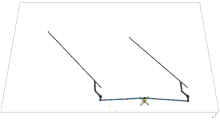
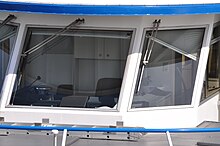




![Fig. 2: Widely used alternative configuration suiting either LHD or RHD operation[a]](https://upload.wikimedia.org/wikipedia/commons/thumb/c/c3/Scheibenwischer2.svg/313px-Scheibenwischer2.svg.png)


